ThorImage®LS
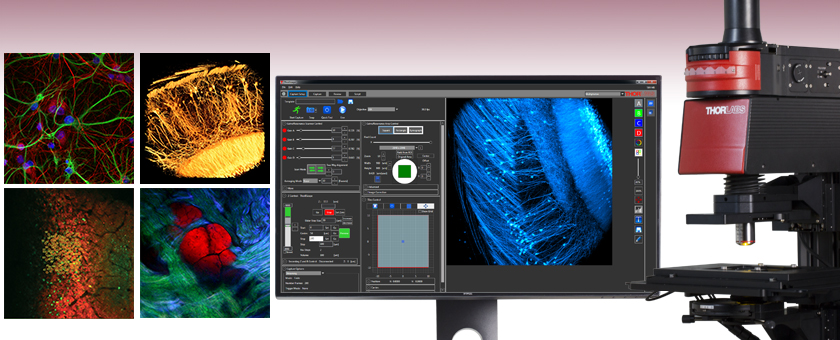
- Imaging Software to Control our Multiphoton and Confocal Microscope Systems
- Customizable Interface with Diverse Functionality
See Overview Tab Below for Image Information
See Overview Tab Below for Image Details

Please Wait
Video 1.1 Features of ThorImage®LS
ThorImage®LS Imaging Software
ThorImageLS software manages the activities of Thorlabs' microscopes and supplemental equipment (see Specifications tab for details) to acquire and analyze data sets. Version 4.3 has been developed by Thorlabs with a range of features and capabilities, including holographic optogenetics, single photon counting, deep physiological scans, large-area tiling, high-speed imaging, and multi-modal acquisitions. To explore the functionality of ThorImageLS, click on the images below or through the tabs.
 |
 |
 |
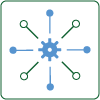 |
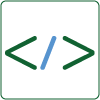 |
 |
 |
 |
| Workspace | Capabilities | ThorSync | Interoperability | Open Source | Specifications | Image Gallery | What's New |
In
The images at the top of the page feature some of the acquisitions possible using ThorImageLS:
- Top Left: Multi-channel confocal image of neurofilaments (green), glial cells (red), and DAPI nucleic stain (blue) from hippocampus cells.
- Bottom Left: Simultaneous photostimulation of 100 cells co-expressing GCaMP6f (green) and C1V1 (red). Provided courtesy of Lloyd Russell, Dr. Adam Packer, and Prof. Michael Häusser, University College London, United Kingdom.
- Top Right: Two-photon 3D image stack of thy1-YFP in a cleared region of the dentate gyrus. Provided courtesy of the 2017 Imaging Structure and Function in the Nervous System Course at Cold Spring Harbor Laboratory, Cold Spring Harbor, NY.
- Bottom Right: Coherent anti-Stokes Raman scattering (CARS, red), second harmonic generation (SHG, green and purple), and sum frequency generation (SFG, blue) image of a chicken heart.
ThorImage®LS Software Workspace
ThorImageLS streamlines the image acquisition and analysis process with a user-intuitive, feature-rich workflow. Control panels are designed so that the most important features are readily available and users can quickly set up their experiment. Panel layouts are completely customizable for different users or imaging modalities. All software features are easily accessible, providing a complete, self-contained software package without compromising ease of use.
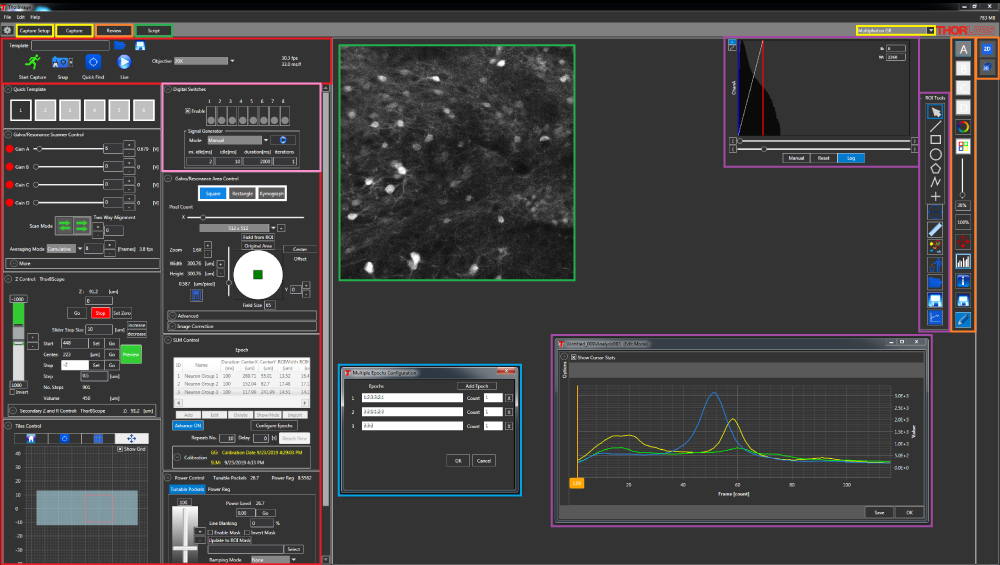
Figure 2.1 Click the highlighted regions in the image to explore the various image acquisition and analysis features of the ThorImageLS software.
Video 3.1 Real-Time Acquisition with ThorImage®LS
| Confocal Fluorescence Image Acquisition (Time: 0:19) |
| Tiled Image Acquisition (Time: 2:41) |
| Confocal 3D Image Stack Acquisition and Visualization (Time: 3:52) |
| Multiphoton 3D Image Stack Acquisition and Visualization (Time: 6:17) |
ThorImage®LS Capabilities
ThorImageLS is designed with a wide range of features to serve as one integrated imaging software solution; certain functionalities are described in detail below. For a complete list of software features, see the Specifications tab.
| Quick Links |
|---|
| Data-Dense Acquisitions |
| 5D Visualization Modalities Supported Sequential Imaging |
| Images Coordinated with Experimentation |
| Photoactivation and Masking High-Speed Video Deep Physiological Scans |
| Simultaneous Image Processing |
| Real-Time Analysis and Image Correction Large-Area Mosaic Tiling |
Data-Dense Acquisitions
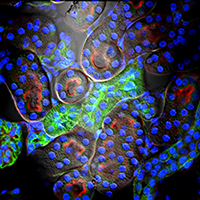
Click to Enlarge
Figure 3.2 Confocal Fluorescence & DIC Image of Kidney Cells
5D Visualization
ThorImageLS is provided as a complete software package, allowing acquisition of a complete XYZCT dataset. 3D volumes can be captured in x, y, and z, or tracked over time to study kinetic events. Independently, you can add a 5th dimension of information by overlaying multiple fluorophores or imaging modalities, all in the same software. The setup and acquisition process is designed to be simple and intuitive for even the most data-rich of acquisitions.
Imaging Modalities Supported
To simplify acquisition for microscopes utilizing multiple imaging modalities, ThorImageLS is compatible with the following:
- Laser Scanning (Galvo-Galvo and Galvo-Resonant)
- Fluorescence
- Dodt
- Second Harmonic Generation (SHG) / Two Photon
- Third Harmonic Generation (THG) / Three Photon
- Widefield
- Fluorescence
- Brightfield
- Hyperspectral
- Differential Interference Contrast (DIC)
- Dodt
- Darkfield
- Phase Contrast
Use one software package for a multi-modal image acquisition instead of switching amongst multiple software applications. Laser-scanned images can be simultaneously obtained with widefield images. In addition, through ThorSync™, external camera data may be synchronized with microscopy image data to correlate image features with specimen behavior.
Sequential Imaging
ThorImageLS supports both standard and fast sequential imaging by coordinating and precisely timing the actions of the microscope with the laser source. Using our multi-channel confocal system, wavelengths may be easily switched to acquire co-registered images and image stacks.
Images Coordinated with Experimentation

Click to Enlarge
Figure 3.4 1.2 mm thick in vivo 3D image of the primary somatosensory cortex in a mouse. Neurons are shown in yellow, expressing
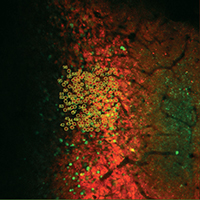
Click to Enlarge
Figure 3.3 Simultaneous Photostimulation of 100 Cells Co-Expressing GCaMP6f (Green) and C1V1 (Red). (Courtesy of Lloyd Russell, Dr. Adam Packer, and Prof. Michael Häusser, University College London, United Kingdom.)
Photoactivation
Light activation for optogenetics and protein uncaging using ThorImageLS can be performed in a number of ways, depending upon the equipment used.
Our spatial light modulator (SLM), available for Bergamo® III systems, can be directly controlled by ThorImageLS to activate hundreds of regions of interest (ROIs) simultaneously, individually, or in groups. This module features SLM multiple epoch control that allows users to execute SLM patterns in a pre-defined order. In addition, the user has the ability to offset the Z position of these multiple patterns, enabling precise and simultaneous three dimensional photoactivation of arbitrary sets of neurons anywhere within the addressable volume of the microscope, enabling three dimensional holographic optogenetics. The image in Figure 3.3 utilized our software to identify and stimulate 100 neurons simultaneously within the microscope's field of view.
Galvo-galvo scanners can be used for the serial stimulation of thousands of ROIs. The galvo scan pattern and ROI type can be specified to reliably stimulate entire cell bodies. This activation is tightly synchronized with image acquisition to maximize the lifetime of sensitive PMTs.
Full-field stimulation is available using either an LED or a laser source. Stimulation can be timed before or after image acquisition, or between individual frames.
Masking
Laser scanning microscopy with galvo-resonant scanners suffers from nonlinear laser dwell times, particularly at the edges of the scanning field. ThorImageLS can control Pockels cells, available for Bergamo III and Veneto® systems, to blank edges and mask ROIs at high speed in order to improve laser excitation uniformity across regions of interest and prevent unnecessary exposure to areas outside of those regions. Regions are identified by a simple drag-and-drop across the live image.
High-Speed Video
Image sets can be acquired at up to 400 fps and are only constrained in storage by the size of available hard drive space. Volumetric imaging synchronizes the fast z piezo travel of the microscope with data collection, ensuring accurate scans at user-defined steps. Our real-time ROI analysis can be used mid-acquisition on the acquired or streaming image set at video frame rates, reducing down time for sensitive in vivo experiments.
Deep Physiological Scans
ThorImageLS can tune the operation of supplemental hardware to more effectively acquire deep, high-speed 3D image stacks. The long-travel stepper motor and the high-precision piezo motor can be coordinated in order to traverse large z ranges at user-defined step sizes. Depth-dependent scatter through tissue can be compensated for by ramping the laser power as a function of depth, resulting in an even signal response throughout the scan.
Simultaneous Image Processing
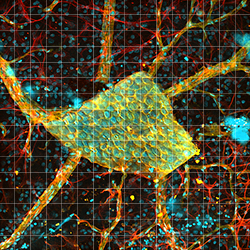
Click to View Full-Resolution Image
Figure 3.5 Stitched confocal fluorescence image of rat retina stained with DAPI, isolectin, and GFAPDr. The overlaid white lines denote individual tiles. (Courtesy of Jennifer Kielczewski, National Eye Institute, National Institutes of Health, Bethesda, MD.)
Real-Time ROI Analysis and Image Correction
Regions of interest can be selected before or during acquisition in order to perform real-time calculations simultaneously with image acquisition. ROIs may chosen in various shapes and, for photoactivation, grouped together as separate populations. Possible ROI calculations include:
- Intensity as a Function of Time
- Mean, Minimum, and Maximum Intensity
- Standard Deviations
- Arithmetic Operations
- dF/F
- Ratiometric Imaging
Large-Area Mosaic Tiling
When a single image scan does not provide sufficient resolution to view the area of interest, the sample plane can be imaged as a series of tiles, which are then stitched together in the software as a single high-resolution composite image. Configure tile position, size, and overlap for different samples, and enable tilt adjustment to correct for samples non-orthogonal to the objective. This functionality is compatible with both time series image sets and 3D image stacks.
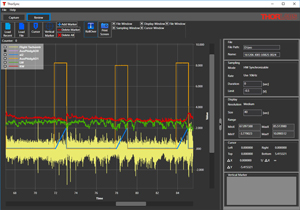
Click for Details
Figure 4.1 ThorSync recording of tethered Drosophila flight to study rapid steering maneuvers around looming stimuli. (Provided courtesy of Dr. Michael Dickinson and Dr. Ivo Ros from the California Institute of Technology, Pasadena, CA.)
ThorSync™
ThorSync monitors and stores digital and analog signals at rates up to 2 MHz. A software add-on designed to work in concert with ThorImage®LS, it coordinates and synchronizes the microscope's data acquisition with supplementary hardware and processes. Like ThorImageLS, ThorSync application code is available for complete software customization.
This software package outputs arbitrary digital waveforms for initiating and coordinating experimental activities, such as photoactivation/photostimulation. Using the same base clock, analog and digital samples are stored simultaneously and stored to the computer's hard drive. There are up to 16 analog input channels (AI) and 32 digital TTL input channels (DI) available for sampling. Analog samples have a 16 bit resolution across a ±10V range. Digital output signals (DO) for light and shutter control can refresh at up to 2 MHz. The software utilizes a PCIe-based DAQ that is installed and configured in the microscope’s main PC.
During and after data acquisition, ThorSync stores detailed waveform information visible to the user. Rollover statistics provide real-time information for all signals, and user-chosen location indicators can measure the time and y-axis values for each waveform. ThorSync provides support for spectral analysis and virtual channel support. As with ThorImageLS, acquired datasets are only limited in size by the hard drive selected for storage. ThorSync data is stored in a non-proprietary HDF5 format that is easily imported into most data analysis packages.
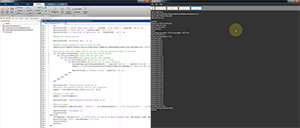
Click to Enlarge
Figure 5.1 MATLAB Script Run Directly from ThorImageLS Software
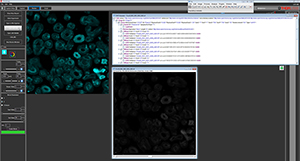
Click to Enlarge
Figure 5.2 Acquired Image Set Opened from ThorImageLS into ImageJ
Automated Acquisition and Analysis with Third-Party Integration
ThorImageLS has a variety of methods to automate data acquisition and analysis, either solely using ThorImageLS or in concert with third-party software and code.
ThorImageLS Scripts
Sequences of capture setups and commands can be dragged and dropped directly into a scripting composition area. No programming knowledge is needed for this interface. In addition, ImageJ macros and MATLAB scripts can be executed directly from the script area in tandem with script commands. Scripts may be exported as XML files to share across different users and workstations.
Third-Party Integration
Our software has simplified automated acquisition and analysis using MATLAB and Fiji/ImageJ. Acquired data sets may be opened directly into MATLAB or Fiji/ImageJ using a quick connect button in the ThorImageLS software. The software can also directly run MATLAB scripts and Fiji/ImageJ macros. Inter-process communication (IPC) enables control for starting and stopping image and signal acquisition in ThorImageLS and ThorSync, respectively.
Data Export Features
Images and supplementary data are saved in non-proprietary file formats for easy integration with other software. Images may be stored as 16-bit TIFF, OME-TIFF, or RAW files, with calibration values stored in the metadata. Supplemental instrument and experiment settings are stored in XML format. ThorSync and ROI statistics data are stored in HDF5 format.
Software Development Kits (SDKs)
ThorImageLS has open SDKs available for users to code their own device plugins. Contact us using the Open-Source tab for access to these SDKs as well as the full software code.

Sam Tesfai
General Manager,
Thorlabs Imaging Systems
Access the Code for ThorImage®LS
To serve the needs of the scientific community, ThorImageLS and the add-on ThorSync are open source and included with compatible Thorlabs microscope systems. Written in Microsoft C# and C++, they can be fully customized to individual needs. We also provide lifetime technical support for our software. Contact us below for additional information and GitLab access to download the latest ThorImageLS (version 4.3) and ThorSync software source code. Feature suggestions and bug reports are also welcome. Please note that, because ThorImageLS versions 3.0 and later add significant new features over 2.x and 1.x versions, versions 3.0 and later may not be compatible with all older microscopes. We continue to support older software versions for customers with older hardware.
As an example of code integrated with ThorImageLS and ThorSync, enabled by our open source code availability, please see the user-developed ThorViewer GUI. To explore automating the operation of ThorImageLS through scripts or 3rd party software, such as MATLAB or ImageJ, see the Interoperability tab.
| ThorImage®LS Version 4.3 Specifications | |||||||||||||||||
|---|---|---|---|---|---|---|---|---|---|---|---|---|---|---|---|---|---|
| Imaging Modalities |
Laser Scanning |
|
|||||||||||||||
| Widefield |
|
||||||||||||||||
| Applications | Photostimulation |
|
|||||||||||||||
| Electrophysiology Signaling | |||||||||||||||||
| Fast Deep-Tissue Scanning | |||||||||||||||||
| Operating System | Microsoft Windows® 10 (64-Bit) | ||||||||||||||||
| Compatibility (Click for Details) |
Thorlabs Microscopes |
||||||||||||||||
Microscopy Cameras
|
|||||||||||||||||
Light Sources
|
|||||||||||||||||
Supplementary Hardware
|
|||||||||||||||||
| Software Capabilities | |||||||||||||||||
| Acquisition | High-Speed |
|
|||||||||||||||
| Time-Lapse |
|
||||||||||||||||
| 3D Physiological Scans |
|
||||||||||||||||
| Large-Area Mosaic Tiling |
|
||||||||||||||||
| Multi-Modality |
|
||||||||||||||||
| ThorSync™ |
|
||||||||||||||||
| Supplementary Hardware Feature Integration |
|
||||||||||||||||
| Analysis | Ratiometric Acquisition / Calculations |
|
|||||||||||||||
| Settings | Workspace |
|
|||||||||||||||
| File Export |
|
||||||||||||||||
| Third-Party Integration |
|
||||||||||||||||
| Support | Open Source |
|
|||||||||||||||
| Technical Support |
|
||||||||||||||||
New Functionality for ThorImage®LS
Click the links in Table 9.1 to be directed to updates and changes concerning the newest and previous versions of ThorImageLS.
Version 4.3 - January 4, 2024
- Added Support for the Toptica iChrome CLE-50 Laser
- Added Support for 3P Imaging
- Added Support for the CS126MU, CS165MU, and CC505MU Monochrome Cameras
- Added Support for a Mini-Circuits® Switch Box
- Added Support for PMT3100R (Included in Some Bergamo Multiphoton Imaging Systems)
- Added Configurable Channel View Layout (Horizontal and Vertical)
- Added Improved Scan Path Realignment and Added Ability to Save Multiple Reference Images for Multiple Targets
- Allows for Simplified Relocation to Same Target Day to Day
- Added New Features for SLM Operation
- Added 3D Mode Toggle
- Added Z Offset
- Added Ability to Export Patterns
- Added Set Zero% and Delete All Buttons
- Added Pattern Center to Display as "0" Point
- Added SLM Control Panel Advanced Mode Enhancement
- Added New Optional Delay Between Epochs
- Added SLM Control Panel Import/Export Enhancement
- Ability to Export Table of SLM Patterns
- Added New SLM Settings
- Added to ThorSLMSettings.xml and Application Settings
- Added Ability to Offset the Z Position of Pattern Points in New 3D Mode
- Enhanced ORCA Fusion Features
- Updated Exposure Calculation for Master Pulse Mode
- Added Option to Enable Water Cooling Control
- Added Improved Performance When Switching Modalities
- Enhanced Two-Way Scanning
- Two-Way Scanning is Now Allowed Up to a Pixel Density of 4096 x 4096 When Only One Channel is Selected
- Only Selectable by Dragging the Slider Bar to the Desired Pixel Density in One-Way Before Switching to Two-Way
- Added Camera Frame Rate Control
- Added UI Control of Two Blue Mini-Circuits® Switch Boxes
- Added 3D SLM
- Added Continuous Preview and Enhanced Orthogonal Views for Z-Stacks
- Added Improved Laser Safety Control for Digital Switches When Switches Are Configured for Laser Switching
- Added Control for Stimulus Shutter Operation When Using Stimulus Capture Mode
- Added Camera Frame Rate Control
- Added a New Section to Control the Frame Rate for CMOS Cameras with this Functionality
- Added Image-Based Autofocus
- Added Ability to Find the Optimal Focus Point of the Sample Based on Image Contrast
- Added Automatic Version Update Checker
- When Connected to Internet a Version Update Check Will Occur as the Splash Screen Loads When ThorImageLS Is Started Up
- Added Signal Generator Analog Mode
- Allows Custom Control of Analog Modulation
- Added New Continuous Button for Repeated Preview
- Allows for Fast Location Sample in XZ and YZ Line Scan Mode
- Added Enhanced IPC Communication
- Added IPC Command to Load an Experiment or a Template
- Added IPC Commands to Move X, Y, Z, and Secondary Z Stages
- Added IPC Commands that Get Sent from ThorImageLS Every Time a File Is Saved During T Series Experiments
Version 4.1 - September 13, 2021
- Added Support for the Hamamatsu ORCA-Flash Camera (Model C13440)
- Due to this Camera Not Running for a Finite Number of Frames, There Will Always Be Extra Frame Triggers at the End of a Capture
- Added Support for the Hamamatsu ORCA-Fusion Camera (Model C14440)
- Added Support for Thorlabs' Chrolis™ 6-Wavelength High-Power LED Source
- Added Support for Bergamo 2P Systems with Galvo-Resonant Scanners
- Added Support for Bergamo 3P Systems with Galvo-Galvo Scanners
- Added Support for the MCM6000 Motor Controller
- Supports X, Y, and Z Motors
- Supports Digital Flipper Mirror
- Added Button in Inverted Light Path Control to Move the NDD Mirror In and Out
- Added Ability to Use Wavelengths from the Chrolis Settings' File as Labels for Each LED
- Peak Wavelength Will Show When Hovering Over the Top of Each Label
- Separated Galvo-Resonant and Galvo-Galvo Alazar Features in Multiphoton Mode
- Added Option in DC2200 GUI to Enable the LED
- Added Selection of Windows® 7 or Windows® 10 Operating System to the SLM Feature
- Added Ability to Display Images as a Rolling Average in the Capture Tab
- Allows Images to Update Quicker (For Display Only)
- Cumulative and Non-Cumulative Data is Still Saved as Configured
- Added DDR05 Features Back to the Installer
- Used for the DDR25 Direct Drive Rotation Mount
- Enhanced the Line Profile Window
- Added an Auto Y-Scaling Option
- Added Option to Show X-Axis in Microns or Pixel Number
- Added Setting to Always Append Index to the Experiment Name for the First Instance of Using a New Name
- Added Option to Zoom into ROI
- Added Features to Pinhole Panel
- Allow Users to Display Size in ADU or Microns
- Fixed Homing Issue when Selecting Calibrate Button
- Updated Quick Support to TeamViewer 15
- Added Ability to Check PMT2100 Amplifier Saturation Count
- Added Features for MCM600 Controller
- Added Support for New Cards, Shutter, and Piezo
- Card Type Auto-Detection Based on Slot Name Given by Configuration in MCM6000UI
- Added Support for a MCM6000 Condenser Module
- Added Option to Pre-Move Galvo Scanners to Start Position for ThorDAQ GR
- Added Background Worker to Monitor Interlock for the Inverted Microscope
- Added Log File Handling Upon Startup to Keep Files from Growing Too Large
- Added Ability to Stop Capture When Interlock Disconnect Is Detected for the Inverted Microscope
- Added Speed Selection Options for the ORCA Camera
- Modes Added are Ultra Quiet, Standard, and Fast
- Added Galvo-Resonant Image Rotation Features
- Allows the Rotation in an Image to Be Set to Match the Stage Motion on Cerna® Microscopes
- Added Ability for 1 Flyback for Fast-Z Imaging at 12 kHz
- Added Enhancements to Field in the ROI Feature
- Allows for the Pixel Density to Change to the Size of the ROI for Faster Imaging
- Added Ability to Rotate Galvo Resonant Image
- Supports a Rotated Mounted Scan Head on the Cerna® Body
- Added Enhanced Time-Based Line Scan
Version 4.0 - October 15, 2019
- Added Support for Windows® 10 OS
- Added Support for CS895MU and CS505MU Monochrome Cameras (Requires ThorCAM 3.2)
- Allows for Hot Pixel Correction
- Added Support for CSN210 Motorized Dual-Objective Nosepiece
- Allows for Improved Objective Setup and Control
- Added Support for Secondary Three Channel Controller
- Added Support for Second LED of the DC2200 LED Driver
- Added Support for New Version of Thorlabs' Tiberius® Femtosecond Ti:Sapphire Laser (No Longer Available)
(Up to 1060 nm) - Added Support for Second Channel for GGNI (Allows for Sequential Imaging with 2 Channels)
- Added Support for Controlling Up to 6 Digital Shutters (ThorShutterDig)
- Added Support for Resonant-Galvo-Galvo Scan-Head (Galvo-Resonant or Galvo-Galvo Scan Modes Only)
- Added Support for Coherent® Discovery with AOM Support (Requires Coherent® Discovery GUI Version 1.8.3 and 3rd Party Virtual Serial Port Software)
- Renamed “Bleaching” to “Stimulation”
- Added Scale Bar in Image
- Added Help Menu Features
- Allows User to Check for Updates
- Allows User to View Log File for Trouble-Shooting
- Added Shortcuts to Hardware Settings and Application Settings in Hardware Connections Window and Edit Under Settings Menu
- Changed Capture Preview of Image to Show Averaged if Cumulative Mode is Used
- Added Control Digital Switches within Script
- Updated Digital Switch Configuration to be Saved in Experiment Settings and Viewable in Experiment Settings Browser
- Updated Extend Filing Numbering Index Out to 6 Digits
- Added Ability to Save Experiment Data in Multi-Page TIFF Format (OME TIFF)
- Added Rapid Image Update for Galvo-Galvo Scanner
- Updates Image Every 16 Scan Lines During Acquisition
- Added Galvo-Galvo External Trigger Sync (Minimum 1 MHz) (GGNI Not Supported)
- Added Improved Galvo-Galvo and Galvo-Resonant Triggering Times
- Added Ability to Read Resonant Frequency Probe
- Added Configurable Trigger Output (Signal Generator) Based on Time or Other Digital Events
- Added Auto Update for Histograms
- Added Dedicated Bleach Shutter Control for Galvo-Galvo and GGNI
- Added Stimulation Epoch Control
- Added Additional Stimulation Features (Pre Idle, Post Idle) and Control Lines (Active, Cycle Output, Epoch)
- Added SLM Multiple Epoch Control (Random Epoch)
- Added Ability to Invert Z Control’s Plus and Minus Buttons (Supports Both Primary and Secondary Z Controllers)
- Added Ability to Display X and Y Positions in Microns or Millimeters
- Added BCM-PA Slider Step Size
- Allows for Setting Slide Step Size When Using Slider Plus and Minus Buttons for Power Adjustment.
- Added Auto Saving of Changed Fine Alignment Values
- Added Ability to Save Image Location and Zoom Level When Switching Image Modalities
- Added ThorSync Changes
- Stack Panel Option
- Virtual Channel
Version 3.2 - April 26, 2018
- Added Support for Thorlabs CSE2000 Epi-Illuminator Module
- Added Support for Thorlabs DC2200 High-Power LED Driver
- Added Support for Thorlabs CS2100M-USB Quantalux® sCMOS Scientific Camera
- Added Support for Second Thorlabs Motorized Laser Attenuator Control
- Added Option for Interleave Scanning for Galvo/Galvo Systems
- Added Ability to Configure Galvo Lines for X or Y
- Enhanced the Loading of Galvo Waveforms (Active Loading) to Increase Performance and Allow for Faster Operation
- Changed Galvo/Galvo Two-Way Line Scan to One-Way with Retrace
- Added Option to Turn Off Pockels Blanking for Galvo/Resonant Scanning Using One Way Scan Mode
- Changed PMT Applied Voltage During Sequential Capture
- Allows PMT Voltage to be Applied Even if Not Selected per Specific Sequence
- Added Option 'Staircase' Mode for Fast Z Operation
- Allows the Piezo to Move to the Next Location and Stop While Acquisition Occur
- Eliminates the Moving of the Piezo During Acquisition
- Added Flyback Time Adjustment for Fast Z Operation
- Allows User to Adjust Timing of Piezo Waveform to Have Better Synchronization with Acquisition
- Added New Features for SLM Operation
- Added Epoch Option: This option decreases time between repeated pattern sets.
- Added Pre and Post Pattern Idle Times: Allows for configurable delay before and after SLM Patterns.
- Added Configurable Galvo Buffer Size
- Added Power Density Display Based on Measured Power
- Added Ability to Hide SLM ROIs When Bleacher is Configured for Galvo/Galvo and Not SLM
- Changed the Operation of the 'Start Capture' Button in Capture Setup
- Added More Color LUTs: Red Hot, Magenta Hot, and Orange Hot
- Added Ability to Configure Quick Access Template Buttons for Saving and Loading Commonly Used Workspace Templates
- Added Ability to Run Matlab Scripts from within ThorImage
- Added More Information to Experiment Settings Viewer
- Allows User to View the Information without Editing the Experiment.xml
- Added Common Pixel Size Pull Down for Camera Modality
Version 3.1 - November 3, 2017
- Added Support for Thorlabs' Scientific Monochrome CCD Cameras
- Allows Imaging With Supported Cameras
- Added Support for Spectra-Physics® Insight Dual Port Laser
- Added Support for Coherent® Discovery Dual Port Laser
- Added Support for Thorlabs' Tiberius® Femtosecond Ti:Sapphire Laser (No Longer Available)
- Allows for Fast Sequence Capture
- Added Support for Thorlabs' Hyperspectral Imaging System (No Longer Available as a Preconfigured System)
- Allows Capture of a Hyperspectral Sequential Image Stack
- Added Support for Spatial Light Modulator (SLM) Photoactivation
- Allows for Calibration and User Interface for ROI Generated Patterns
- Includes Additional Digital Outputs for Galvo-Galvo Scanner
- Added Support for Thorlabs' Beam Stabilizer
- Added Support for External USB National Instruments™ Cards (USB-6363 and USB-6341)
- Added Support for Two Additional Digital Shutters (Configured Similarly as Previous ThorShutterDig)
- Added Quick Access Icon for Hardware Settings Window
- Enhanced Displayed Device Feature
- Allows User to Configure Which Devices are Displayed in Hardware Setup
- Added PMT Polarity Option to the UI Under the PMT More Panel
- Added Search Capability When Editing Application and Device Settings
- Added Display of Bergamo® Rotation Value in Secondary Z Panel (Value Saved in Experiment.xml)
- Added Pockels Cell Minimum Power Indicator on Pockels Cell Slider
- Gives Indication if Pockels Cell is Operating Below Recommended Minimum Power
- Added Ability to Control a Fourth Pockels Cell Cell for Galvo-Galvo Configurations
- Added Custom Configuration of Pixel Density List
- Added Center Bleach Scanner and Pockels Cell Power Control to Bleach Panel
- Added 'Do Not Show' Message to 'Fiji' (ImageJ) Install Location Message
- Enhanced ROI Calculations
- Note: Changed Calculations May be Slightly Different From Previous Versions, up to 3 Decimal Places
- Added Disconnect State for Available Devices Not to be Controlled by ThorImageLS
- Added Multiple Modalities
- Allows User to Configure and Switch Between Different Imaging Modalities Easily
- Added Digital Offset Capability for PMT2000
- Adjustment Allows for Same Dynamic Range Between Galvo-Resonant and Galvo-Galvo Scanners
- Added Pockels Cell Digital Output for Galvo-Resonant Scanner
- Includes Output of Digital Line During Bleaching and Image Acquisition
- Similar to Previous Galvo-Galvo Functionality
- Added Pockels Cell Digital Output to be Active During Image Acquisition for Galvo-Galvo Scanner (Previously Only Available During Bleaching)
- Added Configurable Software Buttons to Control National Instruments™ Digital PFI lines
- Added Focus Tilt Adjustment for Tile Capture
- Allows User to Configure 3 Point Focus Plane to be Used During Capture
- Ensures Focus Across All Tiles
- Added Ability to Set the Pockels Cell Power Mapping to Linear
- Added Option to Turn Off Pockels Cell Blanking at 0% for Galvo-Galvo
- Added Pockels Cell Phase Shift Setting to Galvo-Galvo (Previously Only Available for Galvo-Resonant)
- Added Ability to Configure Min and Max Field Size for Scanners
- Added PMT Selection for Simultaneous Bleach Imaging
- Allows Users to Select PMT to be Used for Simultaneous Bleach Imaging
- Added Improved Hardware Triggering to Start Acquisition
- Added Linearization Table for MCLS Laser
- Added Estimated Bleach Duration for Each Bleaching ROI
- Located in Bleach Setup
Version 3.0 - October 13, 2016
- Added Support for DDR05 Fast Power Control Device
- Allows for Faster Power Ramping Acquisitions
- Added Support for Spectra-Physics® Mai Tai Laser
- Added Support for Entry Level Galvo-Galvo Confocal System (Previously Separate Digital Acquisition Board Necessary)
- Added Fine Two-Way Calibration
- Allows for Less Two-Way Adjustment When Changing Field Sizes
- Added Ability to Save Galvo-Galvo Offset and Scale Values to ThorConfocalGalvoSettings.xml File
- Added Option to Save .tiff Files Compressed or Uncompressed
- Added Option to Save Only Enabled Channels as Raw
- Added Ability to Save Snapshot Image, Either as Single Image or as Experiment
- Added Ability for Multi-Location Imaging on Platforms With Supporting Stages (Bergamo, MCM3000 Series and MLS Stage)
- Includes New UI for Defining and Navigating Multi-Location Regions
- Capability to Invert Scanners (Flip Horizontal and Vertical) for Galvo-Resonant and Galvo-Galvo Systems
- Capability to Invert Stage Directions for Bergamo, MCM3000 and MLS Devices
- Added Ability to Use ROI Mask (ROIMask.raw) as Pockels Cell Mask
- Includes Updating Mask in UI
- Added Ability to use Pockels Cell Power Ramping During Fast Z Acquisitions
- Added High Temporal Resolution Image Capture Spacing
- Allows to Set Delay Between Frame Acquisitions
- Added Ability to Sequentially Capture Images Using Different Hardware Settings Such as Channel, PMT, Laser and Power
- Added Ability for MCLS Laser Calibration to Linearize Power Output
- Added Support for Secondary Z Panel
- Added Offset Control Support for PMT2000 Devices
- Added Ability to Image and Bleach Simultaneously
- Added Option to Save Bleach Images in Raw Format
- Added Ability to Turn off Monitor When Starting Experiment Capture
- Added Ability to Synchronize the Start and Stop of ThorSync With Start and Stop of ThorImageLS Capture
- Added Orthogonal View Functionality for Z Stack Acquisitions in Image Review
- Added New Script Commands to Move X, Y and Z Motors Between Script Acquisition
- Changed Layout for Hardware Setup Window
- Added Mouse Scrolling in Settings Editor
- Removed Unnecessary .xml Files in Settings Editor View
- Moved Center Scanners and Resonance Scanner Always on Functionality to Area Control Advanced Panel in Capture Setup
- Added Second Column Option for Capture Setup Display
- Moved Field Size Entry to Under Scan Area Cartoon
- Added Dropdown List for Most Popular Pixel Density Settings
- Added +/- Buttons for Galvo-Galvo Angle Control
- Changed Z Slider Bar to Objective Graphical
- Replaced Coarse/Fine Buttons With Increase/Decrease Buttons
- Changed Z units from mm (millimeter) to µm (microns)
- Added Visibility Option for "Set Zero" Feature in XY and Z Panels
- Added Visibility for Invert Option in Z Control Panel
- Added Visibility Option Individual Light Path Controls
- Renamed Coherent® Control Panel to Multiphoton Laser Control
- Display Summary and Status for Collapsed Panels in Capture Setup
- Added features to Histogram Control Such as:
- Black and White Point Fields
- Connector Between Black and White Point Fields to Help Locate Mid-Point
- Ability to Enlarge Single or all Histograms
- Log Scale Display Option
- Stats Chart and Stats Window Changes
- Change How They are Displayed (Selecting to Close the Window No Deselects Visibility)
- Added Ability to Save Chart as .jpg
- Added Ability to Save Table Data as .csv, .txt or .raw
- Change Chart Y Scale to Scientific Notation
- Set Chart X Axis Limit to Range of Data
- Added Display Option for Line Profile Window
- Color Settings Changes
- Added More LUT Colors (BlueStat, CyanHot, GrayStat, GreenStat and RedStat)
- Allow Same LUT for Multiple Colors
- Enhanced Display of Min and Max When Viewing Gray Scale of Single Image Feature
- Eliminated Zoom Level Edit Dialog and Replaced With User Entered Zoom Field
- Changed Experiment Naming by Adding Separate Iteration Field
- Added Dialog to Suppress "File Name Exists" Prompt
- Changed Browsers to More Useful Interface
- Removed Intermediate Menu When Selecting Image Review
- Saving More Experiment Information Such as Galvo-Galvo Angle Value and Pinhole Size
- Z stack Experiments Open Z Slider to Mid-Range
- Added Z and T Unit Display for Z and T index
- Image Review Play is Now in Continuous Loop Until Manually Stopped
- Changed Galvo-Galvo Pixel Dwell Time Scale Bar to Single Bar
Version 2.4 - March 1, 2016
- Added Support for USB Controlled Compact PMTs (PMT2100)
- Added Ability to Scan User Drawn Square, Rectangle, Kymograph, Line and Polyline ROIs (Line and Polyline Scanning Requires Galvo-Galvo Scan System)
- Added Ability to Scan ROIs at Any Angle (Requires Galvo-Galvo Scan System)
- Added Software Support for Thorlabs Variable Beam Expander and Power Attenuator
- Added New Logic for Linearization for ThorPowerControl
- Added Ability to Open Multiple Experiment Review Windows
- Added Ability to Review Experiments Saved in Raw Image Format
- Added User Defined Hotkey Shortcuts for Popular Commands Such as Start/Stop Scan, Stage Motion (X,Y and Z) and Power Control
- Added Ability for User to Define Experiment Notes
- Added Nyquist Calculator for Defining Optimal Scan Settings
- Added Scale Bar Option to Display Length (µm) for Line and Polyline ROIs
- Added Configurable Digital Pulse Output Upon Completion of Saving Image Frames to Disk
- Added Configurable Digital Output during Capture Active to Synchronize With Other Equipment
- Normal or Inverted
- Added Time, Pixel Size and Frame Rate Metadata Now Stored With Experiment File and Displayed in Experiment Review Info Panel
- Added Galvo-Galvo Pockels Cell Setting to Keep Pockels Cell at Power When Capture Complete (ParkAtMinimum) Similar to Galvo-Resonant Setting
- Added Support for Tiberius Femtosecond Ti:Sapphire Laser (No Longer Available)
- Added UI Enhancements
- Histogram Up/Down Buttons in Addition to Slider Control
- Additional Configurable Wavelength Selections for Coherent® Laser Control Panel (Increase from 4 to 8)
- Tile Position Indicator in XY Map
- Abililty to Resize ROIs
- Using Shift Key When Drawing ROIs Forces Shapes to be Square, Circle or Vertical and Horizontal
- Display Status/State of Collapsed Control Panels (Helps to Reduce Scrolling Curing Setup Process)
- Added Reset Button for Control Panel Visibility
- Added Current Power Level Display for Pockels Cell and Power Regulator During Capture of Experiment
- Increased Experiment Settings Browser Width
- Added Message Indicating When Max Number of Frames is Exceeded
Version 2.3 - March 9, 2015
- Added Ability to Generate High Zoom Image of an ROI Area
- Added Additional Color LUT Options Such as Rainbow, Fire and Yellow Hot (for 2D and 3D Images)
- Added Z Position Display During Capture
- Added Circle and Oval ROI Shapes
- Added User defined Arithmetic Measurements for ROIs
- Added PMT On/Off Status and Voltage Display in UI
- Added Additional Bleaching Features (Bleaching per Point of ROI Shapes, Added Bleaching Fill for ROIs, Added Bleaching FIll Types of Raster and Tornado for Rectangles)
- Added Additional Features for ROI Stats Chart and Table (Display or Hide Cursor Statistics, Display or Hide Table or Chart, Pan Option for Navigating Chart)
- Added X and Y Home Location in XY Control Panel
- Added Saved Bergamo Rotation Value in Experiment.xml File
- Changed Stimulus Mode Functionality
- Added True Line Scan Functionality (Renamed Existing Line Scan to Kymograph)
- Added Wait Feature to Scripting Functionality
- Added Support for New Variable Beam Expander
Version 2.2 - December 8, 2014
- Added Capability for Adding Multiple ROIs With Statistics
- Added Capability for Multi-Point Bleaching (Requires Galvo-Galvo Scanner)
- Added Real-Time ROI Statistics Calculations During Capture
- Added ROI Statics Table and Chart Plotter to Image Review (Post Processing)
- Added Option for Turning on Resonance Scanner at Software Startup
- Added Feature to Set X and Y Stage Positions to "0" Similar to Z Function
- Added Feature to Select Which Z Position Image is Displayed During Fast Z Imaging
- Added Capability to Increase Frame Rate Capture to 8 fps (Default is 4 fps and Does Not Work)
Version 2.1 - September 10, 2014
- Added Control for Multiple Pockels Cell and Simultaneous Power
- Added Power Feedback Capability for Pockels Cell
- Added Interface for New MCM3000 Controller
- Added Visual Indication of if X, Y or Z Position is Out of Range in Capture Setup
- Added Support for Mixed Polarity Detectors
- Added Interface for Scanimage to Control the Lightpath Elements on Bergamo Microscopes
- Added Saving of Z Stage Invert Option
- Added 16X Objective to Objective List
Version 2.0 - June 20, 2014
New Features
- Added Streaming Finite Mode With Hardware Trigger for Thorephydata
- Added Enhanced Experiment Browser Interface
- Added 'Open Experiment Folder' Button Using Windows Explorer in Experiment Review
- Added Open Experiment in 'Fiji' (ImageJ) Button in Experiment Review
- Added Database Interface for Saved Experiments
- Added Enhanced Channel Selection Operation in Capture Setup
- Enhanced Stimulus Mode by Changing Max Frames to Time Based Values
- Added Rotation Tool for 3D Viewing
- Added Up / Down Indicators for Channels Black/White Points in 3D Viewer
- Added Persistence to Output Path in 3D Viewer
- Updated Visibility Attribute for Coarse Panel to Be Collapsed in Applicationsettings.Xml
- Added Output Path Persistence Between Thorimage Sessions
- Enhancement to Hide Tile View Icon in Capture Setup Toolbar When XY Panel is Not Enabled in Display Options
- Added 100% Button to Image Review. Resizes Image to Full Size.
- Added Enter Key Function for All Text Boxes
- Enhanced Hardware Triggering for Capture Modes
- Added Bleaching Control to Display Options
Version 1.5 - October 30, 2013
New Features
- Galvo-Galvo Imaging Support
- Pockels Cell Logic With Galvo-Galvo
- Bergamo Communication Support
- Generation 2 ECU Controller Support
- Trigger Each Triggering Mode for Z and T Series Experiments
- Dual Scanner (Galvo-Galvo and Galvo-Resonant) Support (Switchable Via Software Selection)
- Bleaching, Activation and Uncaging of ROIs Support
- User Can Save a Copy of Previewed 3D Experiment from the Capture Setup Panel
- Line Profile Upgraded to Display Multiple Channels Simultaneously
- Stimulus Streaming Capture Mode
- Fast Z Acquisition Option for Streaming Modes
- Zoom Factor for Field Size Adjustment
- Reticle Overlay
| Posted Comments: | |
user
(posted 2021-09-08 00:05:20.363) Do you have a user manual for the ThorImageLS software? If you do, could you post the manual somewhere on the website where it is easy to access. If not--that is absurd--and it would be great if you could write on. Caroline Muellenbroich
(posted 2019-11-14 10:08:50.317) Hi Bergamo team,
we are running Thorimage on our Bergamo and the system was initially setup with a resonant galvo. We now want to switch to a galvo-galvo system. Is there an easy way to change this hardware change in the Thorimage software?
Thanks! nbayconich
(posted 2019-11-18 10:09:26.0) Thank you for contacting Thorlabs. Our Imaging Tech Support team will reach out to you directly to help configure your Bergamo system. ji3g4xupaog0
(posted 2018-10-31 02:48:36.977) 您好,我想請問幾個問題。
ThorImage®LS這套軟體,是提供購買您們產品的客戶免費下載的嗎?還是需要另外再購買呢?
官網上介紹的工作區介面,是軟體自帶的嗎?還是用戶必須自己去寫呢?
我們主要是想通過「ThorImage®LS→DAQ→Galvo Scanning System」再去掃描sample,在ThorImage®LS上面顯示galvo scanning system掃描到的成像圖,不知道實際上能不能這樣操作....?
謝謝。 nbayconich
(posted 2018-11-12 12:46:25.0) Thank you for contacting Thorlabs. At the moment our Thorimage software is only available when included with one of our imaging systems and we do not have a version of the Thorimage software to download separately for DIY projects. Access to the open source project is limited to existing customers looking to customize Thorimage to their needs with Thorlabs microscope. The scanning parts Thorimage is not open source and cannot be customized to function with other scanners and digitizing hardware.
If you currently have one of our microscope systems and need a system software reinstall or update please contact us at imagingtechsupport@thorlabs.com. |
 Products Home
Products Home











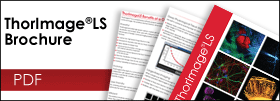
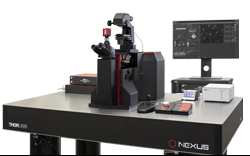
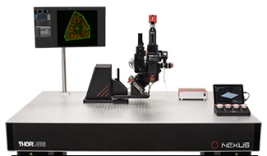


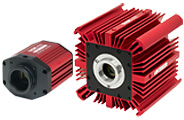
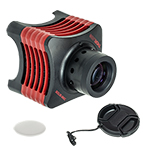
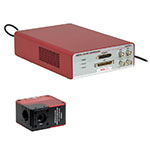

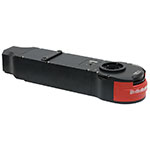
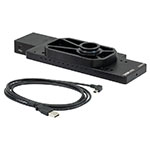
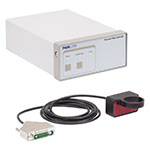
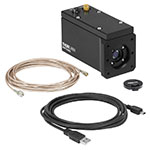


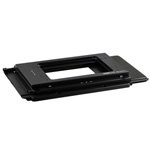
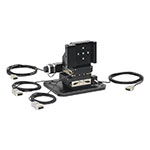
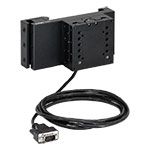
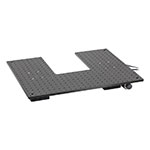
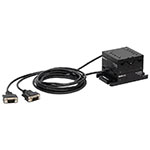
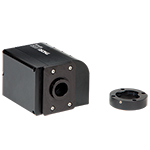
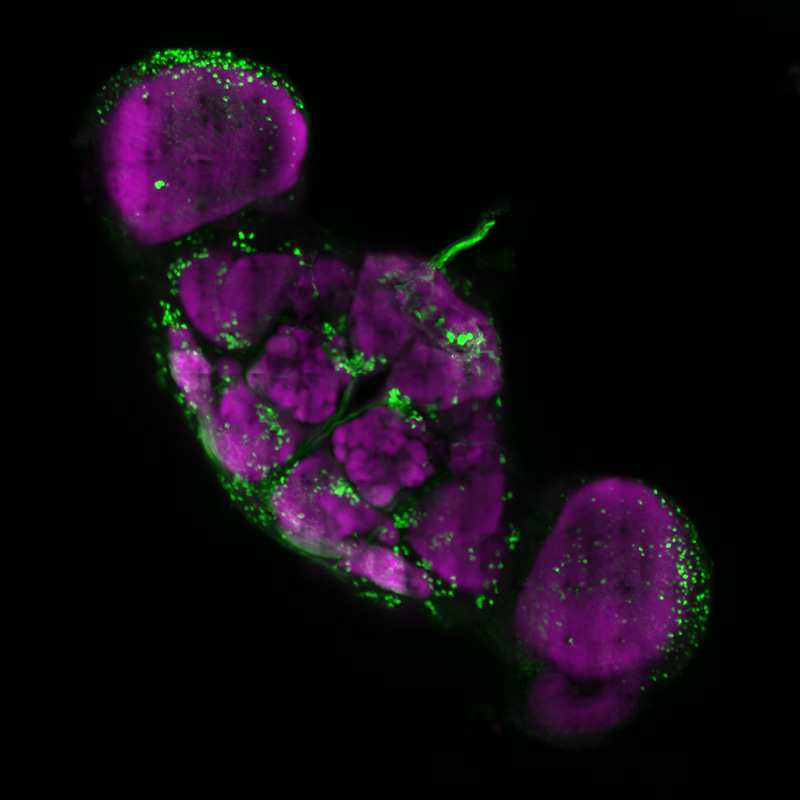


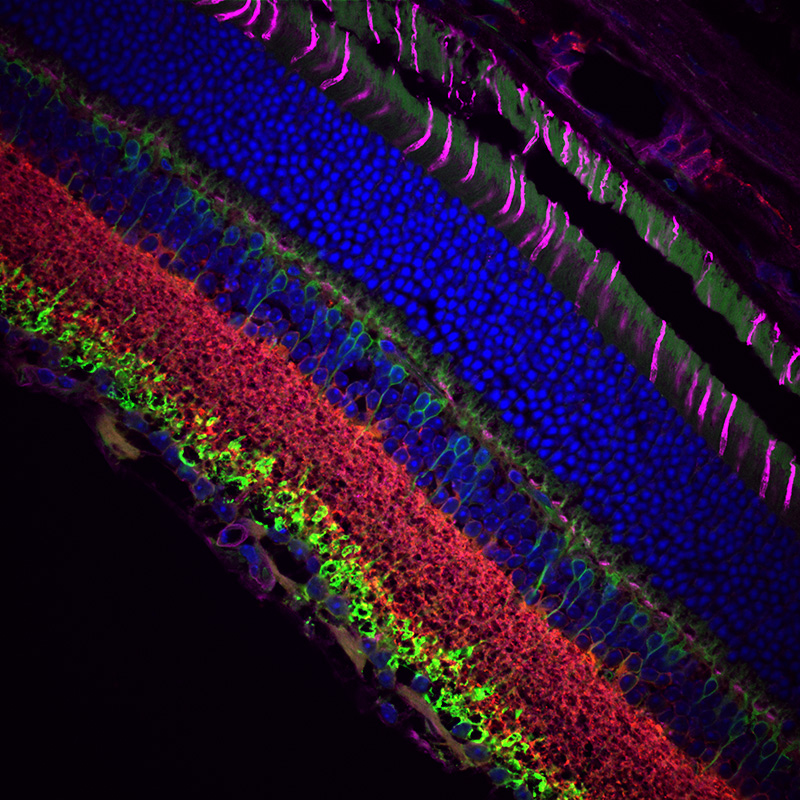


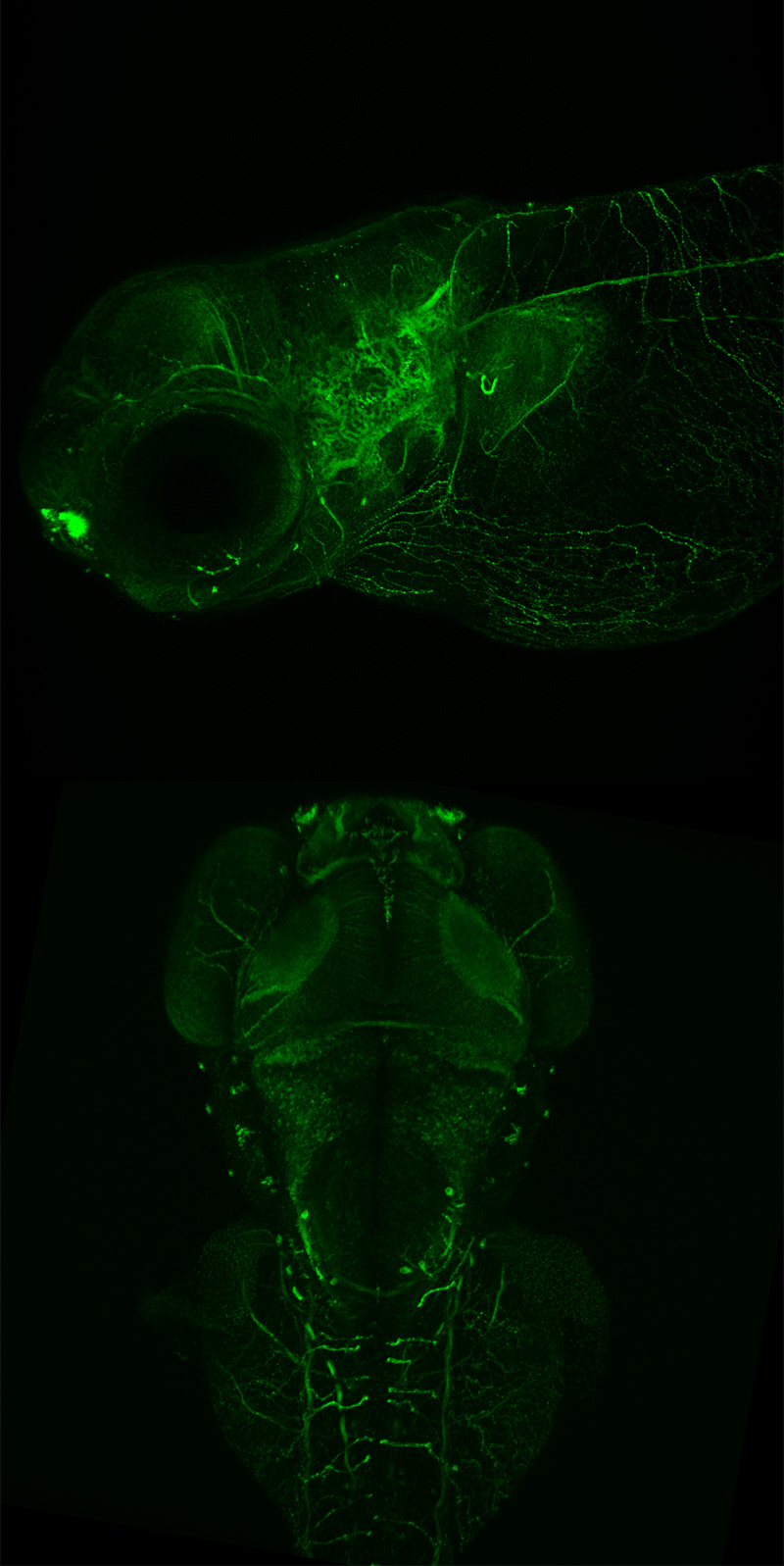
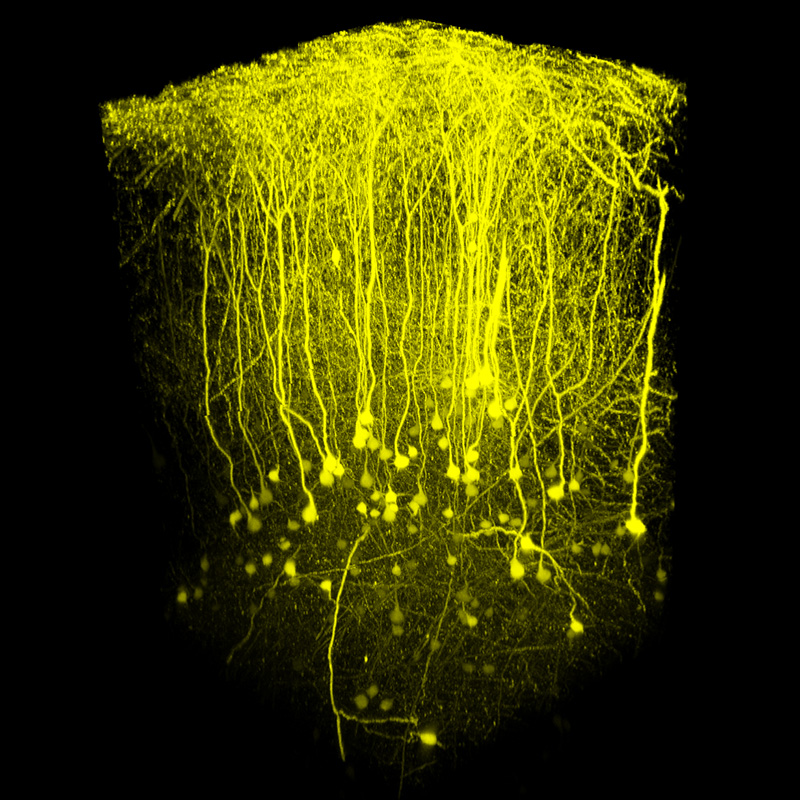

 ThorImage®LS Microscopy Software
ThorImage®LS Microscopy Software